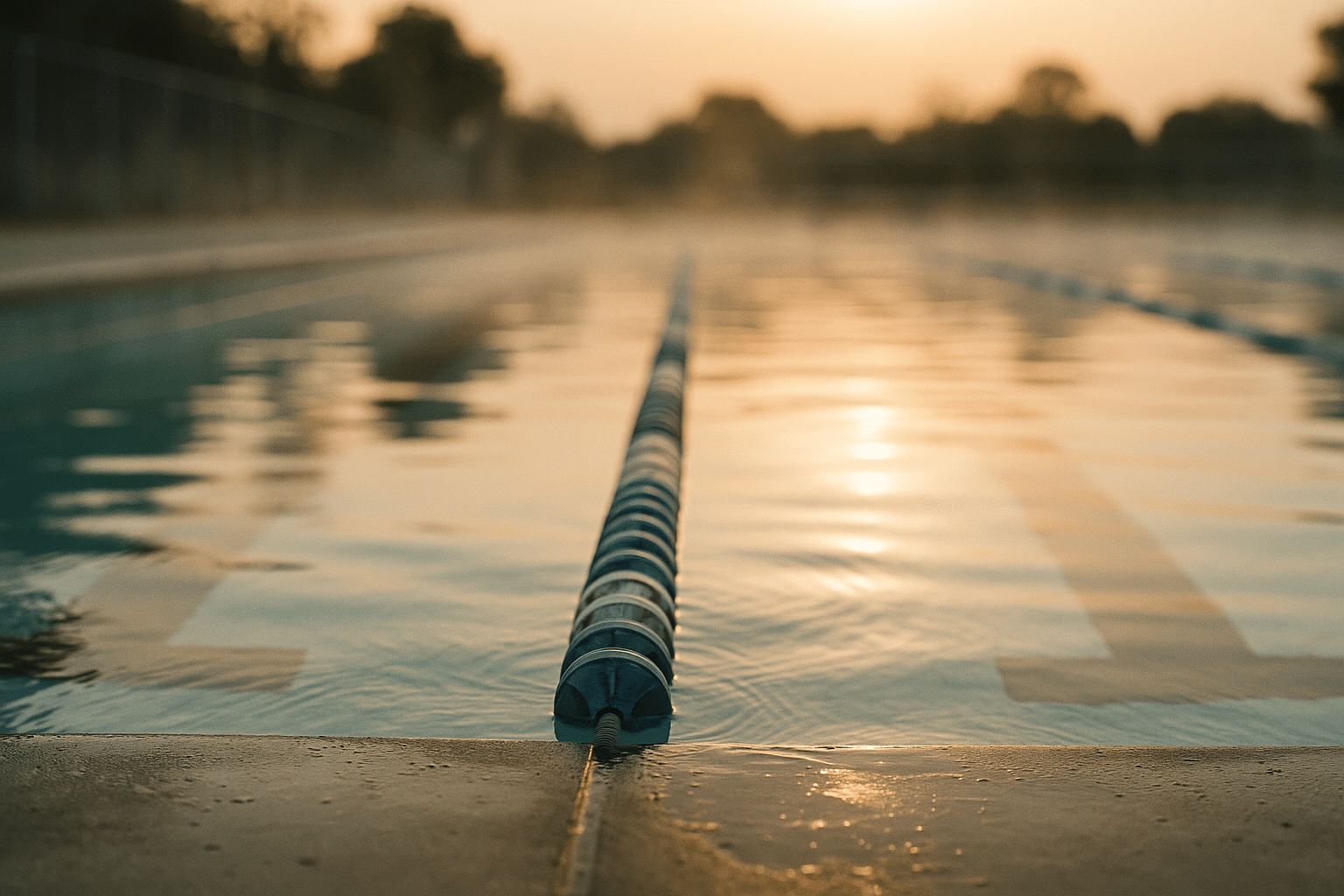
Explore the world of swimming
Why Swimming Matters: A Fluid Path to Fitness, Skill, and Calm
Slip beneath the surface and the world quiets. Water holds you, reshapes time, and makes gravity feel negotiable. Swimming is both exercise and craft—a discipline that blends technique, endurance, and a kind of moving meditation. It supports cardiovascular health, strengthens major muscle groups, reduces joint stress, and opens doors to new environments from calm indoor pools to open-water horizons. Whether you are seeking a low-impact workout, a mindful routine, or a lifelong skill with practical safety value, swimming offers a balanced, adaptable path.
This article begins with an outline and then deep-dives into each part, showing how to train smarter, move efficiently, and enjoy the water responsibly.
Outline
• The health and longevity benefits of swimming, with evidence-based insights and realistic expectations.
• Strokes and biomechanics: how body position, catch mechanics, and timing shape speed and efficiency.
• Training structure and sample workouts you can adapt to your level and schedule.
• Safety, accessibility, and sustainable habits for pools and open water.
• A concluding guide to choosing your next step and staying motivated.
Swimming’s relevance spans ages and abilities. It is a welcoming option for people returning from injury, a potent cross-training tool for athletes, and a sustainable routine for anyone prioritizing heart health, mobility, or stress relief. Compared with many land-based activities, swimming distributes load evenly and allows longer sessions at moderate intensity without the same impact on knees, hips, or lower back. At the same time, it rewards patience and practice: refined technique can yield breakthroughs in efficiency that feel like discovering a current beneath you.
From a practical standpoint, swimming builds water confidence—an essential safety skill for individuals and families. It also scales naturally with goals: gentle laps for active recovery, focused drills for skill development, and structured intervals for measurable fitness gains. In the pages ahead, you will find clear explanations and actionable examples, so you can translate knowledge into movement the next time your toes touch the water.
Health and Longevity: What the Water Does for Your Body and Mind
Swimming engages the heart, lungs, and a large share of the body’s musculature at once. Because water is roughly 800 times denser than air, every motion encounters uniform resistance, turning each lap into a whole-body strength-and-endurance session. Yet buoyancy reduces joint loading, making it suitable for many people who experience discomfort during high-impact activities. This combination—resistance plus support—explains why swimmers often maintain training frequency over long periods without the same wear-and-tear experienced elsewhere.
Cardiorespiratory effects are notable. Regular swimming at moderate intensity can improve stroke volume (the amount of blood pumped per heartbeat) and aerobic capacity. Many participants report reductions in resting heart rate over time, a sign of improved cardiac efficiency. In terms of energy expenditure, steady laps can reasonably range from a few hundred to several hundred calories per hour, depending on stroke choice, body mass, and pace. Interval-based sessions typically increase total energy demand further, while allowing recovery periods that maintain form quality.
Beyond the heart and lungs, swimming supports muscular balance. Freestyle and backstroke strengthen the posterior chain and shoulder stabilizers; breaststroke emphasizes adductors and hip mobility; butterfly recruits powerful hip extension and core control. Rotational mechanics in the torso contribute to spinal mobility, while controlled breathing patterns encourage diaphragmatic engagement and respiratory efficiency. Over weeks and months, many swimmers notice improved posture and joint range of motion, especially when technique drills complement general lap swimming.
Mental well-being benefits are frequently reported in surveys and longitudinal observations. Immersion creates gentle pressure around the body, which can feel soothing; rhythmic breathing and repetitive motion can foster a meditative state that reduces perceived stress. Cold or cool water exposure—applied cautiously—may enhance post-exercise mood for some people. For many, the pool becomes a space for focus: counting strokes, following a pace clock, or simply meeting the line at the bottom can quiet mental chatter.
Key advantages at a glance
• Low-impact conditioning that supports long-term adherence.
• Whole-body engagement that balances strength and endurance.
• Rhythmic breathing that may support stress regulation.
• Scalable intensity, from gentle recovery to robust intervals.
• Transferable life skill that increases water safety and confidence.
Importantly, progression should be gradual. Beginners benefit from short, technique-centered sessions, while experienced swimmers can add structured intervals sparingly to manage fatigue. Paired with adequate sleep, hydration, and simple mobility work, swimming can become a cornerstone habit supporting health across decades.
Strokes and Biomechanics: Turning Technique into Speed and Ease
Efficient swimming is less about raw effort and more about shaping the body to slip cleanly through water. Hydrodynamics reward length, alignment, and rhythm. When technique improves, the same effort produces more distance—and the water starts to feel cooperative rather than stubborn.
Freestyle (front crawl) remains the most widely used stroke for fitness and distance. The essentials include a horizontal body line, relaxed head with eyes slightly down, and hip-driven rotation. The underwater pull begins with an early vertical forearm: fingertips down, elbow high, palm “holding” water as the body slides forward. Kicking should be compact and rhythmic, driven from the hips with soft knees and pointed toes. Breathing comfortably to one side—or bilaterally—keeps oxygen steady and reduces neck strain.
Backstroke shares many freestyle fundamentals—streamlined body, hip rotation, and a high-elbow catch—except the face stays out of the water. This makes pacing and breathing intuitive while still challenging posture and core control. Clean hand entry (pinky-first) and patient, straight-arm recovery minimize shoulder stress.
Breaststroke requires timing above all. The kick is whip-like: heels draw toward the seat, feet turn outward, and a powerful snap brings the legs together. The arm action forms a heart-shaped scull in front of the chest; a streamlined glide follows each stroke, which is where much of the distance is gained. Because the head rises for breath, maintaining hip elevation is crucial to reduce drag.
Butterfly is a study in rhythm and elasticity. Two kicks per cycle coordinate with a strong, symmetrical pull. The chest presses slightly down as the hips rise, then the body “undulates” forward. Done well, butterfly feels like harnessing a rolling wave; done poorly, it feels like climbing stairs while wearing a soaked backpack. Newer swimmers can develop components—dolphin kick, single-arm drills, relaxed breathing—before linking the full stroke.
Common technique pitfalls and simple fixes
• Sinking hips in freestyle: engage the core lightly, look down, and lengthen the exhale to avoid lifting the head.
• Slipping catch: practice sculling and fingertip drag drills to feel pressure on the forearm.
• Overkicking: aim for small, fast kicks that stabilize rotation rather than power the whole stroke.
• Chaotic pacing: use consistent counts—strokes per length or time per lap—to build rhythm.
Across all strokes, prioritize streamlining after each wall push-off. A clean, narrow body line reduces drag more than any single power cue. Over time, pair technique sets (short repeats with focus) with aerobic sets (longer, steady swimming) so form holds up when you are a little tired—that is where meaningful gains occur.
Training That Works: Structure, Pacing, and Sample Workouts
Successful swim training blends repetition with variety. Sessions typically include four parts: warm-up, drill set, main set, and cool-down. The warm-up raises core temperature and gradually recruits stroke mechanics. Drill sets isolate skills—balance, catch, kick—so the main set can feature stronger, more efficient laps. The cool-down reduces tension and consolidates form.
Pacing frameworks are useful. Many swimmers think in effort zones: easy aerobic, steady aerobic, threshold, and fast. An easy aerobic pace lets you breathe comfortably and maintain perfect form; threshold pace feels challenging but repeatable in short sets; fast efforts are brief and sharpen speed. Rest intervals are tools, not shortcuts: a little more rest can preserve technique quality, while shorter rest builds endurance under fatigue.
Tools can help but are optional. A simple pace clock provides structure; a pull buoy, kickboard, and fins can isolate mechanics. Use these sparingly: the aim is to improve natural, unassisted form, not to rely on equipment. Land-based strength—focused on the core, hips, and shoulder stability—supports propulsion and reduces overuse risk.
Sample workouts (adapt to your level and time)
• Beginner (about 30–40 minutes): Warm-up 8–12 minutes easy swimming with relaxed breathing. Drills 6–8 x 25 meters focusing on body alignment and early vertical forearm; rest as needed. Main set 6–10 x 50 meters at steady effort with 20–30 seconds rest, keeping stroke count consistent. Cool-down 5–10 minutes easy, alternating strokes if comfortable.
• Intermediate (about 45–60 minutes): Warm-up 10 minutes, include 4 x 50 progressive build. Drills 8 x 25 alternating catch-focused and kick-focused repeats. Main set 3 rounds of [4 x 100 at threshold effort, 15–20 seconds rest] followed by 100 easy. Aim for even pacing across rounds. Cool-down 10 minutes, adding gentle backstroke to mobilize shoulders.
• Advanced (60–75 minutes): Warm-up 15 minutes, include 6 x 50 with descending times. Drills 8 x 50 focusing on streamlined push-offs and breakout distance. Main set 2 rounds of [6 x 150 at steady-threshold with 10–15 seconds rest], then 8 x 50 fast with generous rest to preserve form. Finish with a long, relaxed 200–400 cool-down.
Progression principles
• Increase only one variable at a time: distance, intensity, or frequency.
• Keep technique metrics—stroke count, perceived smoothness—front and center.
• Schedule recovery: one lighter session for every two or three harder ones.
• Track a few anchor sets (for example, a monthly 10 x 100 at steady pace) to monitor improvement.
By respecting pacing, prioritizing form, and nudging volume upward gradually, you can build fitness that lasts. The key is consistency: two or three well-structured sessions per week can deliver impressive gains without overwhelming your schedule.
Safety, Access, and Sustainable Habits: Swim Well for Life
Water is inviting but indifferent, so prudent safety habits amplify enjoyment. The most fundamental guideline is to swim where conditions are appropriate for your skill and where supervision or partners are available. In pools, this is straightforward. In open water, variables multiply: temperature, currents, waves, visibility, and entry/exit points. A brief pre-swim checklist can transform risk management into routine.
Practical safety checklist
• Never swim alone in open water; tell someone your plan and expected return time.
• Scan for hazards: boat traffic, sudden depth changes, submerged obstacles, and aquatic life.
• Acclimate gradually to cold water; begin with short entries and exit before you feel numbness or shivering.
• Use a bright tow float and a cap with high visibility so others can see you.
• In pools, follow lane etiquette: circle swim when needed, pass at walls, and signal with a light touch on the heel.
Gear choices can be minimal. A well-fitting pair of goggles reduces eye irritation and improves confidence. A simple swimsuit designed for training offers durability and freedom of movement. For those who chill easily, thermal layers for open water extend the season—but always weigh comfort against conditions and experience. Ear protection and a cap can improve warmth and orientation, especially in cooler environments.
Access and inclusion matter. Community pools, learn-to-swim classes, and low-cost lap sessions are available in many regions. For people returning to activity after a long break or injury, short, technique-first sessions reduce barriers to entry. Those with mobility limitations may benefit from accessible ramps, lifts, and the inherently supportive nature of water. Thoughtful scheduling—early mornings, lunch breaks, or weekend windows—can weave swimming into busy lives without disruption.
Sustainability in and around the water ensures others can enjoy it, too. Rinse gear after open-water sessions to avoid transporting invasive species between lakes or rivers. Dispose of trash properly and avoid leaving elastic bands, broken straps, or other debris near shorelines. Choose sun protection that respects aquatic ecosystems and cover up with clothing when possible to reduce product use. When visiting natural sites, use established entry points to protect aquatic plants and minimize erosion.
Conclusion: Your Next Stroke
Swimming rewards patience. Aim for relaxed, repeatable technique, build volume gradually, and celebrate small milestones: a calmer breath, a smoother turn, a steady pace through the final laps. Whether your goal is to feel better, move better, or explore new blue spaces, the water is ready. Start with the outline from section one, choose a workout that fits your week, and step in gently. The surface may be still, but beneath it, a stronger, calmer version of you is waiting to move.


